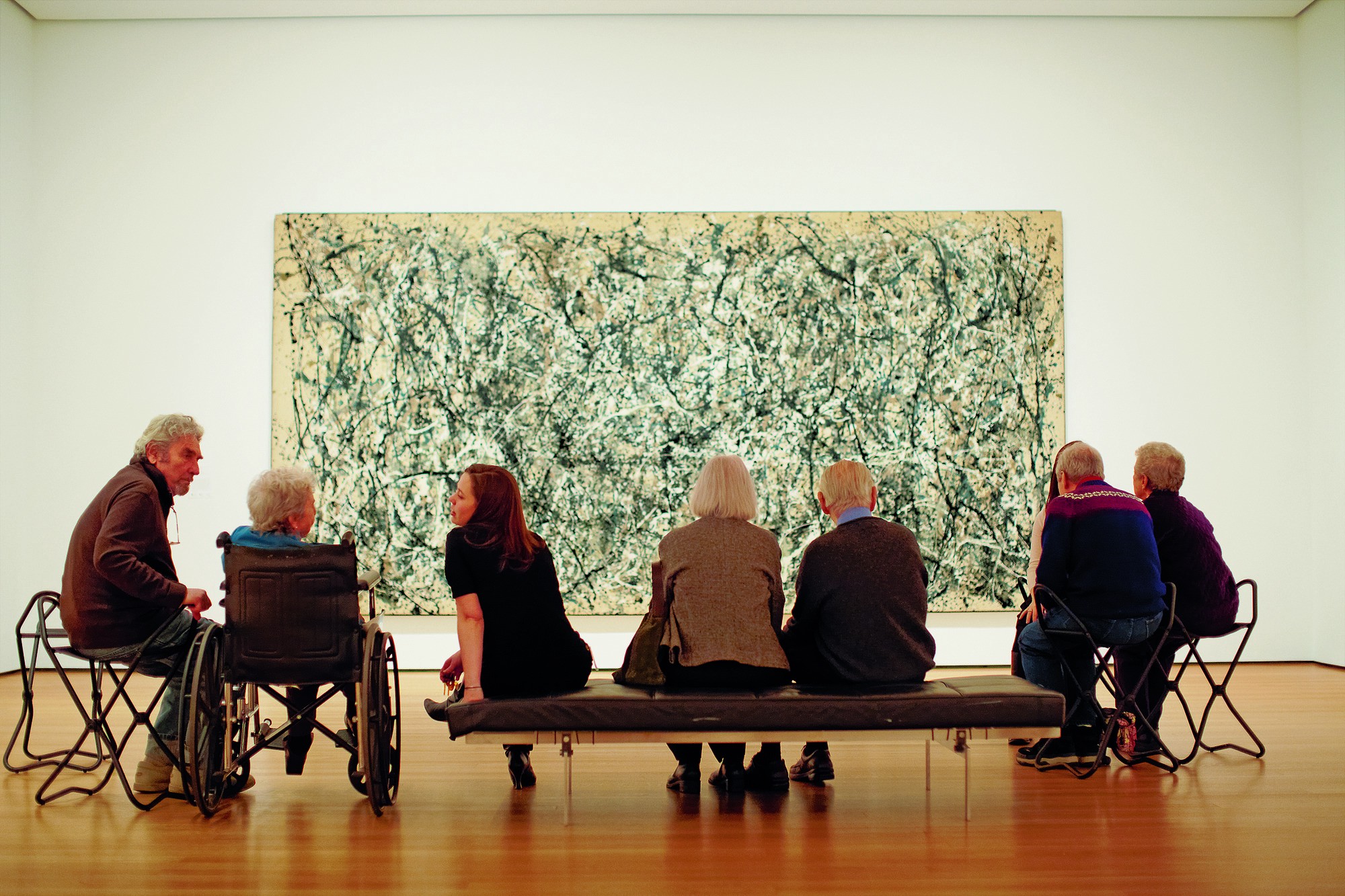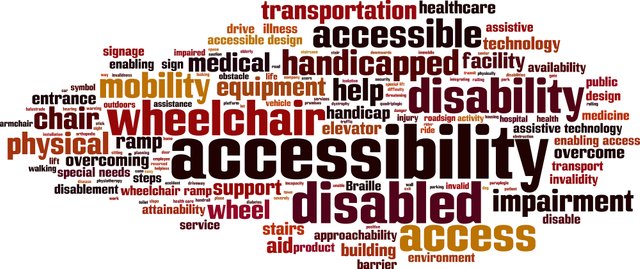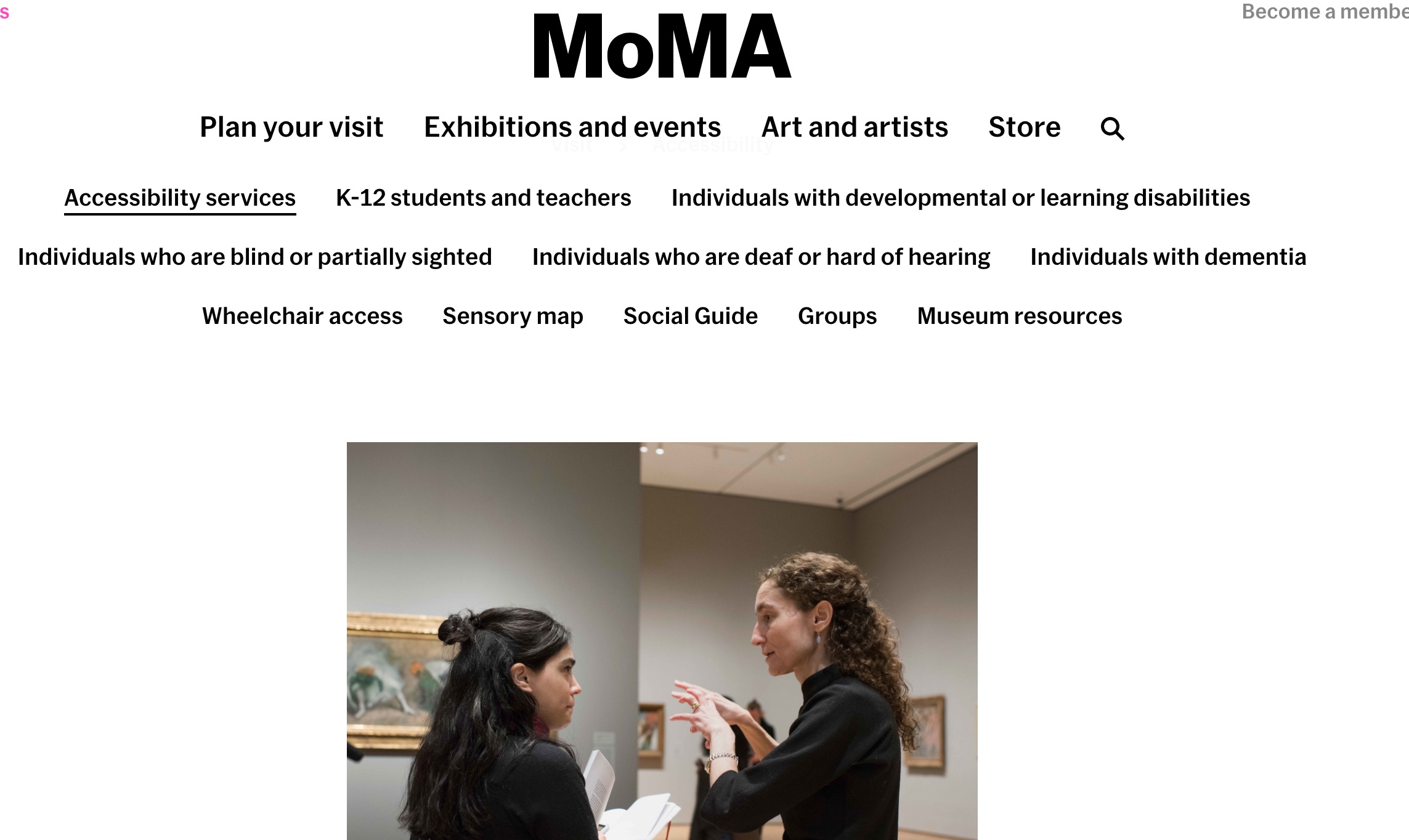MoMA: More Than Being Accessible
Last week, I invited my friends to visit the Philadelphia Art Museum. However, when he got to the gate of the museum, he remembered that he had left his glasses at home. Therefore, we had to begin our “blind visit” with my poor interpretation and description. To think more deeply, this kind of experience makes me consider the disability equality of museums’ accessibility. When we hear the word “disability”, it often reminds us of wheelchairs. People are used to seeing this symbol in their everyday life — from parking lots to restrooms. Also, a wheelchair is a highly visible signifier of a physical disability.

(Older adults take in a Jackson Pollock during a MoMA Access Program. Shown: Jackson Pollock. One: Number 31, 1950. 1950. Oil and enamel paint on canvas. Sidney and Harriet Janis Collection Fund (by exchange). Conservation was made possible by the Bank of America Art Conservation Project. © 2017 Pollock-Krasner Foundation/Artists Rights Society (ARS), New York. Photo: Jason Brownrigg)
Yet the term “disability” encompasses so much more. “While physical disabilities are prevalent, as are physical barriers, especially in a city like New York, they are only one type. Less visible disabilities such as hearing loss, developmental disabilities, and mental health issues, to name only a few, were rarely mentioned among our staff. Often, unless a person knows someone with a particular disability, one simply never thinks beyond the generalization. This, in turn, creates barriers to full accessibility at the Museum.”
Disability equality is a social problem that cannot be ignored. Different responses to this problem will lead to different results. Every disabled person wants their life to be more meaningful and valuable in society. In this way, they demand a friendly relationship of mutual respect and concern with others. When it is related to museums, their accessibility design should provide some efforts to solve this problem and try to use barrier-free design to care for people with disabilities, which is of certain social value.

As MoMa said, “While removing physical barriers to access is important, we don’t stop there. We have to ask ourselves, once people can physically navigate the Museum, what other accommodations will aid their visit? What kind of barriers to universal design will impede their experience? How will they be treated by our staff? Will they feel welcome? Will they feel valued as contributors to the Museum?” Those questions are significant for museums to consider about. MoMa has a long history of serving people with disability. They have direct programming each year for intellectual and developmental disability, such as the Meet Me at MoMA. MoMA For example, they will offer a forum for dialogue through looking at and making arts for individuals with dementia and their family members or caregivers. Museum embodies the love and care for people with disabilities. These facilities in the museum show care for them. These programs can help disabilities integrate into social activities as soon as possible, which can help them in their psychological and physical recovery. Humanization improves the status of disabled people and makes the design care of them more applicable.

MoMA
Also, MoMA is trying to make its collections and programming for all audiences. They have plenty of resources for staff and educator training. How to improve the experience for disabilities and serve them in the best way is very essential. For blind people, MoMA provides gloves for them to touch some available sculptures. Barrier-free access enables them to reach the museum galleries. All the computers in the reading room install the voice command system for the blind. This kind of library also translated a lot of history, culture and other aspects of the books into braille edition simultaneously and also convenient for the blind to read. MoMA Audio is T-Coil compatible, and transcripts of all audio programs are available upon request from the audio desks. MoMA resources
The humanistic solicitude shown by the museum is complementary to the artistry of the exhibition.Disability equality is a problem that museums can easily overlook. The barrier-free channel is not only limited to the physiological level, but also should pay attention to the communication between the disabled and the art. MoMA is an excellent example for museums to learn from. All aspects of museum construction should have better service properties.
100% of the SBD rewards from this #explore1918 post will support the Philadelphia History Initiative @phillyhistory. This crypto-experiment conducted by graduate courses at Temple University's Center for Public History and MLA Program, is exploring history and empowering education. Click here to learn more.